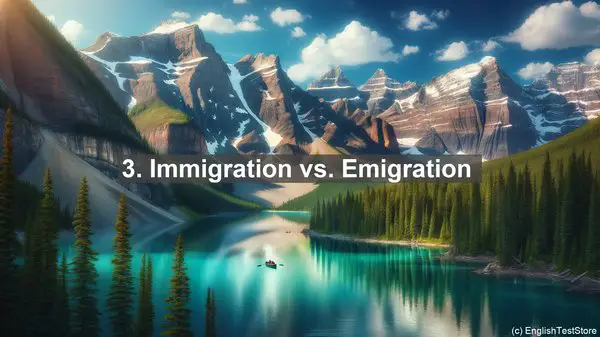Introduction
Welcome to today’s lesson on population biology. In this lesson, we’ll be focusing on some commonly confused words that often trip up even the most seasoned biologists. Understanding these terms is crucial for accurate communication in the field. So, let’s dive right in!
1. Population vs. Community
The terms ‘population’ and ‘community’ are often used interchangeably, but they have distinct meanings. A population refers to a group of individuals of the same species in a given area, while a community encompasses all the populations of different species in that area. So, while a population is like a single thread, a community is the intricate tapestry woven by multiple threads.
2. Density vs. Dispersion
Density and dispersion are two measures used to describe the spatial distribution of individuals within a population. Density refers to the number of individuals per unit area, while dispersion describes the pattern of their spacing. So, density is like the number of people in a room, while dispersion is how they are arranged – in clusters, evenly spaced, or randomly scattered.
3. Immigration vs. Emigration
These terms often cause confusion, but they’re actually quite simple. Immigration refers to the movement of individuals into a population, while emigration is their movement out of a population. Think of it as immigration being ‘in’ and emigration being ‘exit’. Together, these processes determine the population’s growth or decline.
4. Natality vs. Mortality
Natality and mortality are the two sides of the population’s life cycle. Natality refers to the birth rate, while mortality is the death rate. These rates, along with immigration and emigration, contribute to the population’s overall growth or decline. So, while natality brings new life, mortality is the inevitable counterpart.
5. R vs. K Strategists
R and K strategists are two contrasting reproductive strategies seen in different species. R strategists, like rabbits, have high reproductive rates, but their offspring often have low survival rates. On the other hand, K strategists, like elephants, have low reproductive rates, but their offspring have a higher chance of survival. It’s a trade-off between quantity and quality.

6. Endemic vs. Epidemic
Endemic and epidemic are terms used to describe the prevalence of a disease. Endemic refers to a disease that is constantly present in a population, albeit at low levels. Epidemic, on the other hand, describes a sudden and widespread increase in the number of cases. So, while endemic is like a smoldering fire, epidemic is the raging inferno.
7. Habitat vs. Niche
Habitat and niche are two fundamental ecological concepts. A habitat is the physical environment where a species lives, while a niche encompasses not just the physical space, but also the species’ role, interactions, and resources it utilizes. So, while a habitat is like a house, a niche is the specific job or role the species has within that house.
8. Symbiosis vs. Mutualism
Symbiosis is a broad term that describes any close and long-term interaction between two species. Mutualism, on the other hand, is a specific type of symbiotic relationship where both species benefit. It’s like a win-win situation, where both parties gain something of value. So, while symbiosis is a big umbrella, mutualism is a cozy partnership.

9. Primary vs. Secondary Succession
Succession refers to the process of ecological change over time. Primary succession occurs in areas where no soil or organisms exist, like after a volcanic eruption. Secondary succession, on the other hand, happens in areas where the soil is intact, but the community has been disturbed, like after a forest fire. It’s like starting from scratch versus rebuilding.
10. Keystone Species vs. Indicator Species
Keystone species and indicator species are both important in ecological assessments, but they serve different roles. A keystone species has a disproportionately large impact on its ecosystem, like a keystone holding an arch together. An indicator species, on the other hand, serves as a sign or signal of the overall health or condition of an ecosystem. They’re like the canaries in the coal mine, giving us an early warning.
